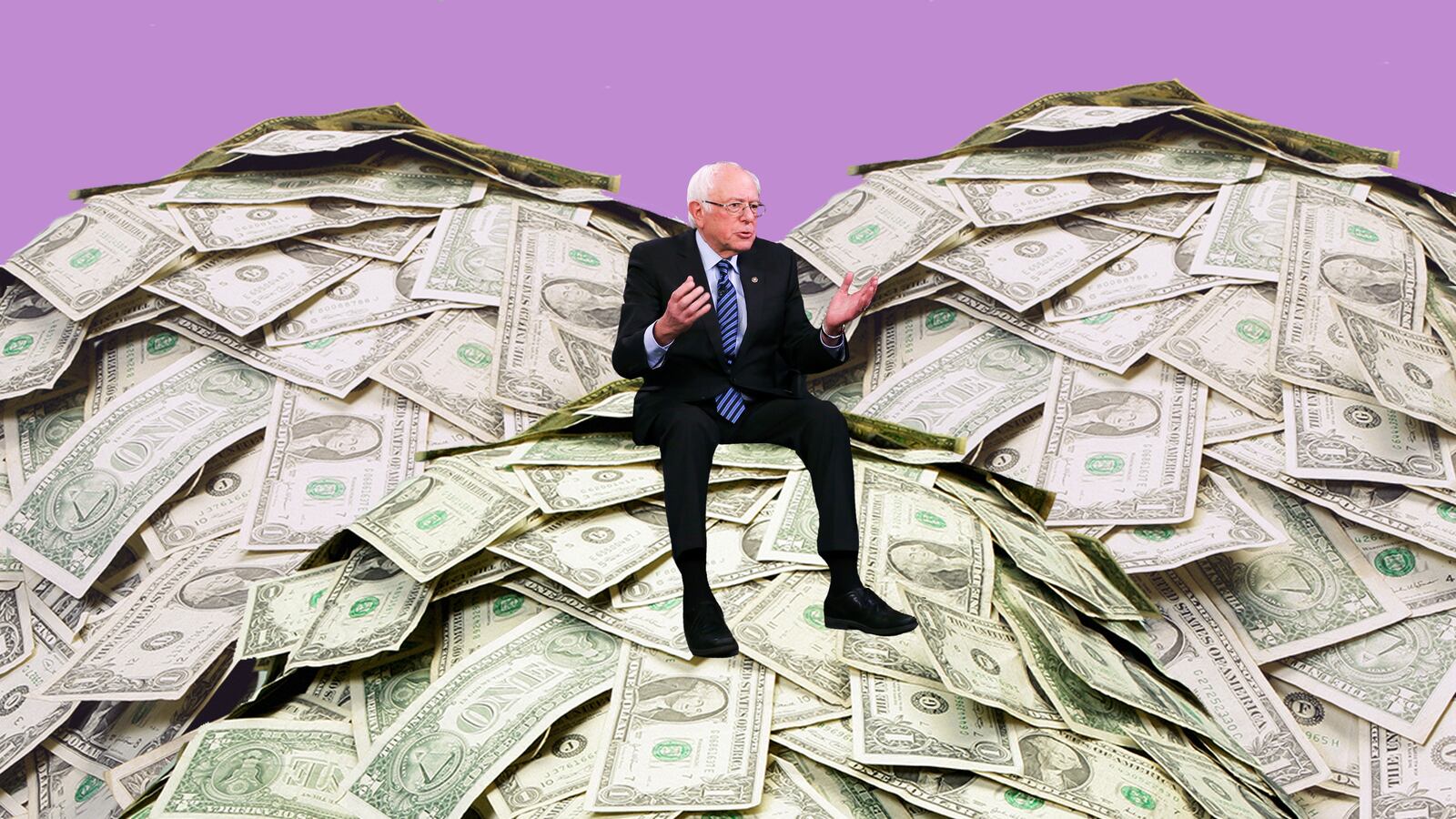After his train wreck 60 Minutes appearance when he couldn’t answer basic questions from Anderson Cooper about paying for some of his proposals, Sen. Bernie Sanders returned the next night while appearing on CNN and released a fact sheet claiming he can pay for all his new spending proposals. But, alas, conventional economic and budget analysis reveal that this claim is not remotely credible.
First, it is worth noting that Sanders’ spending promises total as much as $97.5 trillion over the decade. Sanders concedes that his Medicare For All plan would increase federal spending by “somewhere between $30 and $40 trillion over a 10-year period.” He has promised to spend $16.3 trillion on his climate plan. And his proposal to guarantee all Americans a full-time government job paying $15 an hour, with full benefits, is estimated to cost $30.1 trillion. The final $11.1 trillion includes $2.5 trillion on housing, $1.8 trillion to expand Social Security, $1.6 trillion on paid family leave, $1 trillion on infrastructure, $3 trillion to forgive all student loans and guarantee free public-college tuition, $800 billion on general K-12 education spending, and an additional $400 billion on higher public school teacher salaries.
Many of these spending estimates come directly from the Sanders campaign. One exception is the government job guarantee, for which the campaign has not released a budget score. However, data from a report commissioned by the liberal Center on Budget and Policy Priorities suggests that each one million participants would cost $672 billion over the decade. Assuming the enrollment of: 1) the unemployed; 2) those who are out of the workforce but wanting a job; and 3) half of the current private-sector workers who are making less than $15 per hour and would stand to benefit from the higher pay and job security, that would add up to 45 million participants, at a cost of $30 trillion.
And even those figures are based on an $11.83 wage, do not account for recessionary spikes in enrollment, and assume that half of all workers earning under $15 get a raise and choose to stay in their current job.
Sanders’ $97.5 trillion increase would double the size of the government, which is currently projected at $90.4 trillion, including $60.7 trillion in federal spending and $29.7 trillion in state and local governments spending from non-federal sources. Even adjusting for state savings from Medicare For All, this spending spree would push total government spending at all levels to just under 70 percent of GDP – well exceeding any country in Europe.
If these figures seem too high to be plausible, note that no European government has nationalized a health system that cost nearly 20 percent of its economy, or implemented anything like the $15 per hour government job guarantee.
Sanders’ claims that he can pay for his agenda are not at all plausible. Some estimates are flatly contradicted by the Congressional Budget Office and other neutral scorekeepers, while others do not reflect any conventional economic analysis.
Sanders’ list of pay-fors adds up to $42 trillion over the decade—which covers less than half of the spending under his plan. The $30 trillion government job guarantee (and its offsets) do not appear in his fact sheet, although Sanders assumes that the Green New Deal will increase private sector energy jobs by 20 million (even as fossil fuel employment collapses). The $17 trillion in Medicare For All offsets would fund approximately half of that program. Trillion-dollar proposals to hike K-12 spending and infrastructure (beyond the Green New Deal) do not appear in the document either.
Much of the $42 trillion in listed savings are an illusion. Sanders assumes $3 trillion can be raised from the fossil fuel industry—which reflects nearly all their profits, and exceeds the market cap of the entire energy industry. Sanders proposes expanding the Power Marketing Administrations (which provide electricity to portions of the country), converting them to higher-cost clean energy, and setting consumer prices high enough to still raise a staggering $6.4 trillion to finance the Green New Deal. Corporate tax revenues would triple (including the fossil fuel provisions).
His estimated wealth tax revenues are 50 percent above those of the Penn-Wharton estimates. Sanders’ $2.4 trillion in financial transactions tax revenues are more than triple those deemed plausible by the CBO and the Tax Policy Center. Independent analysts estimate that a 70 percent tax rate on income over $10 million would raise just under $300 billion over the decade—yet Sanders somehow assumes a 52 percent tax rate would raise $700 billion.
Any credible economist will assert that raising taxes by $30 or $40 trillion would substantially harm entrepreneurship and economic growth, which would dampen the new revenues. Instead, Sanders assumes that these taxes would bring a burst of new economic growth that saves $3.6 trillion over the decade from new tax revenues and less need for safety net spending. No economic analysis is provided defending these extraordinarily unconventional assumptions.
Additionally, the campaign estimates seem to simply ignore much of the revenue lost to the interactive effects of piling various new taxes on top of each other.
Virtually all campaigns rely on some degree of rosy math and economics to make their promises look affordable. Bernie Sanders is promising the largest non-war government spending binge in world history. Realistically, the campaign remains more than $50 trillion short of paying for its promises, which—combined with the underlying $13 trillion baseline deficit—could push budget deficits beyond 20 percent of the economy. Sanders still has not satisfactorily answered how he would pay for democratic socialism.






